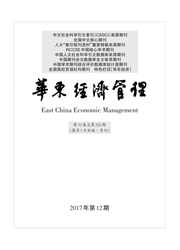

 中文摘要:
中文摘要:
文章以市域为基本研究单元,采用变异系数、泰尔指数、统计分析法和ESDA-GIS方法,以人均地区生产总值为指标,分析了2000年以来我国东部地区市域经济发展的时空变化特征。研究表明,2000年以来我国东部地区经济格局总体变化较小,发达地区多集中在沿海地带、各大经济区,东部靠近海岸一线发达西部远离沿海一带落后的基本格局没有改变;经济发展的整体差异减小,均衡性增强;各地域单元之间的空间关联性增强,经济联系更加紧密;经济发展的高值集聚特征明显,但有弱化趋势。基于区位条件、历史基础、经济区的集聚扩散效应和区域发展政策对东部地区的经济空间格局的形成与演变进行原因分析,并提出了相应的发展策略。
 英文摘要:
英文摘要:
Based on per capita GDP at city-level in east China since 2000,the paper takes cities as a basic research unit and analyzes spatial-temporal characteristics of economic difference by applying the methods of coefficient variance, Theil index and ESDA-GIS. The results show that the overall change of economic development patterns in east China is small since 2000. Developed regions are more clustered in the coastal and major economic areas. The basic pattern of eastern developed regions near and western less-developed regions away from coastal areas remains unchanged. The overall economic difference trend is reduced while equilibrium enhanced. The paper also finds that the spatial relation is enhanced and economic exchanges are clos-er among various geographical units,the economic cluster characteristic of hot spots region is obvious but its trend is becoming weaker. Finally, the paper carries out cause analysis on the formation and evolution of economic spatial-temporal pattern in east China,and puts forward some corresponding development strategies,based on local conditions,economic and social de-velopment foundations,cluster and diffusion effect of economic region and regional development policies.
 同期刊论文项目
同期刊论文项目
 同项目期刊论文
同项目期刊论文
 期刊信息
期刊信息
